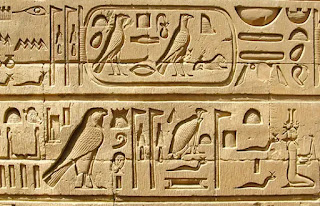The rise and fall of ancient civilizations: Explore the key factors that led to the rise and fall of civilizations such as the Greek, Roman, and Mayan empires.
Ancient civilizations have fascinated people for centuries. These cultures, which flourished for hundreds or even thousands of years, have left behind rich legacies of art, literature, and architecture. However, despite their achievements, many of these societies eventually fell into decline and disappeared altogether. In this blog, we will explore the key factors that led to the rise and fall of civilizations such as the Greek, Roman, and Mayan empires.
The Greek Empire
The ancient Greeks were known for their art, philosophy, and democracy. Their empire began in the 8th century BC, with the rise of the city-state of Athens. The Greeks were united by their language, religion, and culture, but each city-state had its own government and way of life. Athens, with its emphasis on democracy and philosophy, became the most influential of the Greek city-states. However, the Greeks were ultimately defeated by the Macedonian king Alexander the Great in 338 BC, and their empire came to an end.
One of the key factors that led to the rise of the Greek Empire was their geography. The Greek city-states were located on a rugged and mountainous peninsula, which made it difficult for them to be conquered. This allowed them to develop independently and form unique cultures. Additionally, the Greeks were skilled sailors and traders, which helped them to establish colonies around the Mediterranean.
However, the Greeks were also prone to infighting and lacked a strong central government. This made it difficult for them to unite against common threats, such as the Persian Empire. In addition, their focus on philosophy and intellectual pursuits often came at the expense of military strength, which left them vulnerable to attack.
The Roman Empire
The Roman Empire was one of the most powerful civilizations in history. It began in the 8th century BC as a small village on the Tiber River, but eventually grew to encompass much of Europe, the Middle East, and North Africa. The Romans were known for their engineering feats, such as aqueducts and roads, as well as their law and governance.
One of the key factors that led to the rise of the Roman Empire was their military prowess. The Romans were highly disciplined and well-organized, with a strong emphasis on training and tactics. This allowed them to conquer and assimilate neighboring peoples, which in turn helped
to fuel their expansion.
Another factor that contributed to the success of the Romans was their ability to incorporate and adapt the cultures of the peoples they conquered. This allowed them to create a sense of unity and stability across their empire. In addition, the Romans were skilled administrators, with a complex system of government and law that helped to maintain order.
However, the Roman Empire eventually fell into decline. One of the key factors was their reliance on conquest and expansion to sustain their economy. As the empire grew, it became more difficult to maintain control over such a vast territory, and the cost of maintaining their armies and infrastructure became increasingly unsustainable. In addition, the Roman Empire was plagued by internal problems such as corruption, economic inequality, and political instability.
The Mayan Empire
The Mayan Empire was one of the most advanced civilizations in the Americas, with a sophisticated system of writing, art, and architecture. The Mayans flourished in Central America from around 2000 BC to 1500 AD, with a peak period from 250 to 900 AD. They were known for their agriculture, astronomy, and mathematics.
One of the key factors that led to the rise of the Mayan Empire was their mastery of agriculture. The Mayans developed sophisticated techniques such as terrace farming, which allowed them to cultivate crops in the difficult terrain of the Central American jungle. This in turn helped to support a large and complex society.
However, the Mayan Empire eventually fell into decline. One of the key factors was environmental factors such as drought and deforestation. The Mayans relied heavily on agriculture and the environment for their survival, and as the climate changed and resources became scarce, their society began to unravel. In addition, the Mayans were plagued by internal conflicts and warfare, which further weakened their civilization.
Another factor that contributed to the decline of the Mayan Empire was their reliance on a highly centralized political system. The Mayans had a powerful ruling class and a complex system of government, but this also made them vulnerable to political instability and collapse. When the ruling class lost control over resources and faced pressure from external forces, the Mayan Empire was unable to adapt and survive.
In conclusion, the rise and fall of ancient civilizations is a complex and multifaceted topic. Many factors contributed to the success or failure of these societies, including geography, culture, military strength, economic stability, and political systems. While the Greek, Roman, and Mayan empires all rose to great heights, they also eventually fell into decline due to a variety of factors. By studying these civilizations, we can learn important lessons about the strengths and weaknesses of human societies, and how they can thrive or fail in the face of challenges.


Comments
Post a Comment